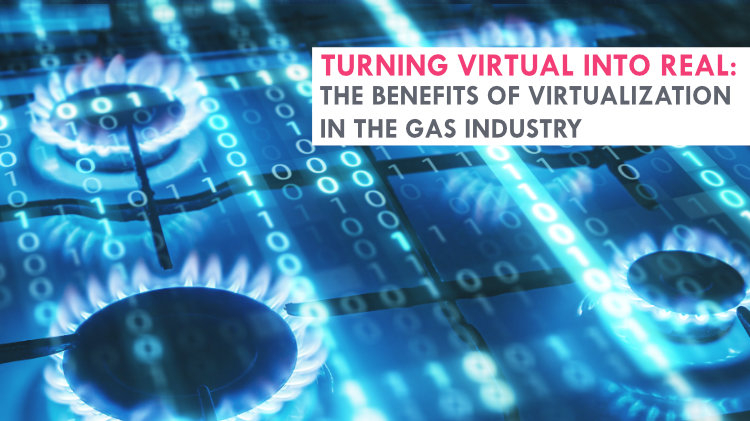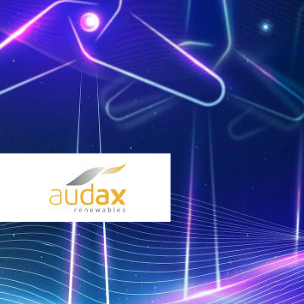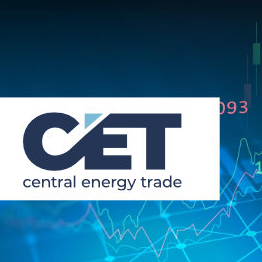
Do people really understand what digitalization means? It’s not just a one-to-one reproduction of physical processes in software, and it’s also more than simple automation. It’s about transforming your business processes and even the underlying business models. It's moving thinking work into the digital space. Consider an algo-trader, for example. It doesn’t just recreate contracts; it is a virtual trader, with all the combined trading expertise of its creators, plus the power to trade at a scale and speed no human trader can match.
Virtualizing gas asset capacities
Like that of digitalization, the concept of virtualization can be elusive. So, let’s take an analogy that helps define it and also demonstrates that virtualization offers a degree of flexibility that is simply not possible in the physical world.
Imagine you’re a farmer growing wheat in Centre-Val de Loire. When the harvest season comes around, you have already sold your produce. Maybe to a wholesaler in your native France, but possibly to someone in Italy or the UK. So, your wheat actually starts its commercial journey while it’s still in the field. Once it’s harvested, it is transported to the nearest grain storage, but it can be traded all over the world. If it meets the requirements for quality assurance, it may end up stored alongside produce of different origins and varieties. At the end of the wheat supply chain, customers will get the quality they expect but might not know the exact origin. The process has many steps - harvest, storage, transport (both to the storage and to the end customer) - some of which are likely to involve different companies, but some services may be bundled together, i.e. provided by the same business.
Similarly, gas stored in a virtual hub can be traded everywhere, regardless of its actual physical location. Virtualization enables traders to access - inject or extract - the gas at any point, increasing both flexibility and the ease of trading. Just like in the wheat analogy above, it is possible to consolidate multiple physical assets and/or services into one, and to carry out transactions on paper that aren't physically possible.
“How do I create more value from my networked assets?” is a question gas market operators keep asking themselves, from transmission system operators (TSO) to operators of storage facilities and, more recently, liquified natural gas (LNG) terminals. Given that the key for value creation is the optimal use of physical assets, virtualization is a logical answer to that question. By offering innovative virtual products, the simultaneous use of multiple assets enhances optimization, while respecting physical constraints. There is vast potential for operators to utilize their capacities with the help of such virtual products and services, and some of them are already exploiting it.
We’ll look at the current virtualization use cases for operators of networked assets - TSOs, underground gas storage (UGS) operators, and LNG terminal operators - and the possibilities the future holds.
For interconnection points (IP), virtualization mainly means so-called virtual reverse flows at physical points and the merging of physical IPs into virtual ones. We talk about a virtual reverse flow when a gas TSO nets the natural gas quantities that have been contracted for transmission in the opposite direction. TSOs offer virtual reverse flows - or interruptible backhaul capacities, as they are also called - against the physical flow of natural gas, but through flow commitment even firm backhaul capacities can be achieved. Virtual interconnection points (VIP) are two or more IPs integrated to provide a single capacity service. They are required by the EU’s Capacity Allocation Mechanisms Network Code and are not only established between adjacent EU entry-exit systems with two or more IPs, but also with non-EU countries, such as Ukraine.
Leading TSOs and market area operators have also started to utilize VIPs by designing new products to eliminate network capacity congestion. For example, in cooperation with Belgian TSO Fluxys, which offers a short haul wheeling product, the merged market zone operator in Germany has designed market-based instruments such as VIP wheeling (i.e. transporting gas from an entry point to a nearby exit point within a VIP) to avoid congestion between the southern and northern parts of the country.
In the case of LNG regasification terminals, it’s the inefficiencies of capacity allocation that has led to the virtualization of capacities. In Spain, for instance, a virtual LNG hub has been established for six LNG terminals to create a single market and single stock accounts for users, with additional small-scale and large-scale services. Such a hub uses standardized rules and pricing, and it doesn’t matter which terminal LNG is physically delivered to: as far as capacity allocation and trading are concerned, it’s all one big pot. In order to better utilize the virtual regasification capacity at the LNG virtual point, allocation is now changing from FCFS (first come, first served) to auctioning.
First made available at the Sines terminal in Portugal, virtual liquefaction is a step further. It offers virtual conversion of natural gas to LNG, which can already be purchased when sendout capacities are committed. The Belgian Zeebrugge terminal, already connected to the virtual trading point (VTP) Zeebrugge Trading Point, also offers virtual liquefaction for small-scale LNG. Currently, national regulators are still crucial, as the Spanish “virtual model” described above shows, but an EU-wide network code regulation for LNG is already on the European agenda.
As far as gas storage is concerned, leading operators of multiple physical storage systems are already offering virtual storage. Virtual storage products generally mean virtual reverse injections/offtakes, similar to backhaul. Establishing a connection to the VTP is a more advanced model of virtualization. The special storage nomination type VTP+ at German VTP Gaspool gas transfer point saves transport and injection fees for the storage contract. Pioneering storage operators, especially the ones from North West Europe, already offer delivery at VTPs.
A virtualized future
The next challenge for the virtualization of capacities will be the virtualization of multiple asset types. One of the most interesting European gas market developments of 2020 was the emergence of a “customs warehouse” regime for Ukrainian underground storage systems. The storage of gas for EU customers was not only exempted from customs duties, but was offered alongside a discounted short haul tariff scheme from Hungarian, Slovak and Polish VIPs. Can you imagine the whole package becoming a bundled product that is offered jointly by the TSO and the storage operator?
Similarly, underground gas storage systems could be excellent buffers to cope with the intermittency of offtakes from LNG terminals. This raises a few questions. How do we integrate virtual LNG hubs with underground gas storage systems? Can LNG and storage operators offer joint, user-friendly services? Looking into the future, how can the capacities of prospective power-to-gas (P2G) facilities, presumably in a regulated or negotiated third-party access regime, be virtualized - through virtual “reverse electrolysis” or the coupling of physical P2G facilities to virtual ones in the same area, or perhaps by bundling P2G facilities with short-haul capacities or integrating gas storages with P2G hubs through bundled services?
Network gas asset operators are looking for additional revenue streams by developing new virtualized products and services. These require intelligent digitalization and IT systems to address the complexity of the consolidation and interaction of assets, hiding it from customers so that they can focus on the higher-level decisions that are most important to them.
Are you looking to virtualize your gas assets? Our experts can help you design and implement innovative virtual products to deliver additional value to your customers.




